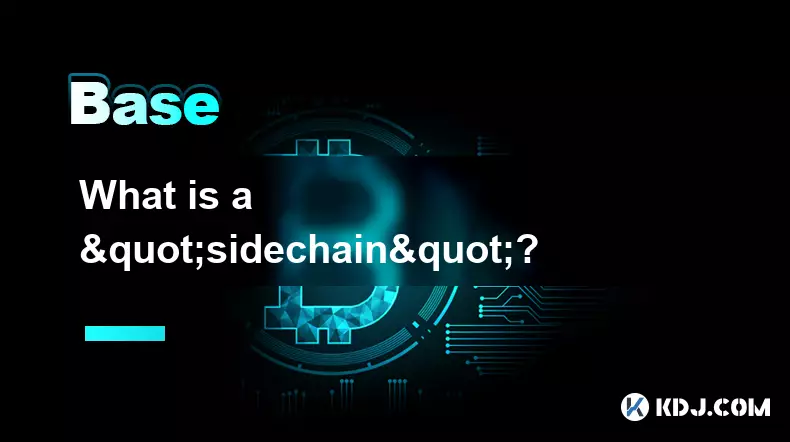-
 bitcoin
bitcoin $115692.075601 USD
5.13% -
 ethereum
ethereum $4162.931611 USD
11.68% -
 bnb
bnb $1310.063287 USD
17.56% -
 tether
tether $1.000983 USD
0.00% -
 xrp
xrp $2.534505 USD
8.16% -
 solana
solana $198.235737 USD
13.49% -
 usd-coin
usd-coin $1.000236 USD
0.02% -
 dogecoin
dogecoin $0.207352 USD
12.89% -
 tron
tron $0.323043 USD
3.62% -
 cardano
cardano $0.701559 USD
11.88% -
 hyperliquid
hyperliquid $39.924597 USD
8.30% -
 chainlink
chainlink $18.934457 USD
11.56% -
 ethena-usde
ethena-usde $1.000552 USD
0.02% -
 stellar
stellar $0.340575 USD
7.05% -
 bitcoin-cash
bitcoin-cash $545.011757 USD
8.86%
What is the purpose of a "testnet"?
Testnets enable safe, cost-free blockchain innovation by allowing developers to test code, upgrades, and dApps without risking real funds or disrupting the main network.
Oct 12, 2025 at 09:01 am

Understanding the Role of Testnets in Blockchain Development
1. A testnet serves as a parallel version of a blockchain network, designed specifically for experimentation and validation. Developers use it to simulate real-world conditions without risking actual funds or disrupting the main network. This environment allows them to identify bugs, assess performance under load, and verify smart contract logic before deployment.
2. Transactions on a testnet are processed just like on the mainnet, but the cryptocurrency used holds no monetary value. These tokens are typically distributed through faucets, enabling developers and testers to conduct repeated trials at no cost. This mechanism supports iterative development and broad participation from the community.
3. Security audits and protocol upgrades are routinely tested on testnets prior to implementation on the primary chain. By exposing proposed changes to diverse usage patterns and potential attack vectors in a controlled setting, teams can evaluate resilience and optimize configurations. This step is crucial for maintaining network integrity once live.
4. New wallet interfaces, decentralized applications (dApps), and exchange integrations often rely on testnets during their design phase. Teams can confirm compatibility with existing infrastructure, debug user experience issues, and ensure accurate handling of transaction data across different platforms.
Facilitating Innovation Without Financial Risk
1. The absence of financial stakes on a testnet encourages bold experimentation. Developers can explore novel consensus mechanisms, tokenomics models, or layer-two scaling solutions without fear of causing economic harm. This freedom accelerates innovation within the crypto ecosystem.
2. Open access to testnet environments fosters collaboration among independent builders, research groups, and open-source contributors. Shared testing frameworks allow for cross-verification of results and collective troubleshooting, enhancing overall system reliability.
3. Projects launching initial versions of governance systems or DAO structures use testnets to observe voting behavior, proposal throughput, and delegation dynamics. These insights inform adjustments that improve fairness and efficiency when the system goes live.
4. Educational initiatives and coding bootcamps leverage testnets to teach students about blockchain mechanics. Learners can deploy contracts, analyze block explorers, and interact with nodes using realistic tools, building practical skills in a safe context.
Supporting Network Upgrades and Fork Simulations
1. When preparing for hard forks or major protocol revisions, development teams mirror the current state of the mainnet onto the testnet. They then apply the upgrade to observe how nodes synchronize, whether chain splits occur, and if transaction finality remains consistent.
2. Node operators and mining pools participate in these simulations to validate their software readiness. Their involvement ensures that the transition on the mainnet proceeds smoothly, minimizing downtime and preventing consensus failures.
3. Real-time monitoring tools are deployed alongside testnet upgrades to capture latency spikes, memory leaks, or unexpected node behavior. Engineers analyze this data to refine release candidates and address edge cases that might not surface in isolated lab settings.
4. Community feedback gathered during public testnet phases helps prioritize bug fixes and usability improvements. Users report interface glitches, unclear error messages, or performance bottlenecks, contributing to a more polished final product.
Common Questions About Testnets
Q: Can testnet tokens ever be converted into real cryptocurrency?A: No, testnet tokens are intentionally separated from the mainnet economy. There is no legitimate process to convert them into valuable assets, as doing so would compromise the security and purpose of both networks.
Q: How do developers obtain testnet coins?A: Most projects operate automated faucets—web services that distribute small amounts of testnet currency upon request. These are usually accessible via Discord channels, developer portals, or dedicated websites linked from official documentation.
Q: Are testnets always publicly accessible?A: While many testnets are open to anyone, some projects run private or permissioned test environments during early development stages. Access may require approval or invitation to limit exposure until core functionality stabilizes.
Q: Do all blockchains have testnets?A: Nearly all active blockchain platforms maintain at least one testnet instance. Even smaller or niche protocols establish testing environments to support dApp creation, integration testing, and long-term maintenance of their ecosystems.
Disclaimer:info@kdj.com
The information provided is not trading advice. kdj.com does not assume any responsibility for any investments made based on the information provided in this article. Cryptocurrencies are highly volatile and it is highly recommended that you invest with caution after thorough research!
If you believe that the content used on this website infringes your copyright, please contact us immediately (info@kdj.com) and we will delete it promptly.
- XRP Price Prediction: Weekend Rollercoaster or Rally?
- 2025-10-12 08:45:16
- Bittensor (TAO): Super Bullish Signals Point to Potential 2x Rally
- 2025-10-11 10:25:12
- Silver Price Correction: Navigating the Dip & Identifying Key SEO Keywords
- 2025-10-11 10:25:12
- Decoding Crypto Trends: Bittensor's Bull Run, Cardano's Dip, and LivLive's Presale Buzz in 'Uptober 2025'
- 2025-10-12 08:45:16
- MoonBull: The Crypto Meme Coin Promising 1000x Gains?
- 2025-10-11 10:30:01
- Crypto Payroll Revolution: Stablecoins, Altcoins, and the Future of Salary Payments
- 2025-10-11 10:30:01
Related knowledge

What does it mean for code to be "open source" in crypto?
Oct 12,2025 at 01:54pm
Understanding Open Source in the Cryptocurrency Ecosystem1. In the context of cryptocurrency, open source refers to software whose code is publicly ac...

What is the purpose of a "testnet"?
Oct 12,2025 at 09:01am
Understanding the Role of Testnets in Blockchain Development1. A testnet serves as a parallel version of a blockchain network, designed specifically f...

How to avoid phishing scams in crypto?
Oct 13,2025 at 06:18pm
Understanding Common Crypto Phishing Tactics1. Cybercriminals frequently use fake websites that mirror legitimate crypto exchanges or wallet platforms...

What is the difference between single-collateral and multi-collateral Dai?
Oct 12,2025 at 05:18pm
Understanding Single-Collateral Dai1. Single-Collateral Dai (SCD) was the original version of the Dai stablecoin launched by MakerDAO in 2017. It allo...

What is a "sidechain"?
Oct 13,2025 at 02:36pm
Understanding the Concept of Sidechains1. A sidechain is a blockchain that operates independently but is connected to another blockchain, known as the...

What is "EIP-1559" and how did it change Ethereum?
Oct 12,2025 at 03:00am
Understanding EIP-1559 and Its Core Mechanism1. EIP-1559 is a protocol upgrade introduced to the Ethereum blockchain as part of the London hard fork i...

What does it mean for code to be "open source" in crypto?
Oct 12,2025 at 01:54pm
Understanding Open Source in the Cryptocurrency Ecosystem1. In the context of cryptocurrency, open source refers to software whose code is publicly ac...

What is the purpose of a "testnet"?
Oct 12,2025 at 09:01am
Understanding the Role of Testnets in Blockchain Development1. A testnet serves as a parallel version of a blockchain network, designed specifically f...

How to avoid phishing scams in crypto?
Oct 13,2025 at 06:18pm
Understanding Common Crypto Phishing Tactics1. Cybercriminals frequently use fake websites that mirror legitimate crypto exchanges or wallet platforms...

What is the difference between single-collateral and multi-collateral Dai?
Oct 12,2025 at 05:18pm
Understanding Single-Collateral Dai1. Single-Collateral Dai (SCD) was the original version of the Dai stablecoin launched by MakerDAO in 2017. It allo...

What is a "sidechain"?
Oct 13,2025 at 02:36pm
Understanding the Concept of Sidechains1. A sidechain is a blockchain that operates independently but is connected to another blockchain, known as the...

What is "EIP-1559" and how did it change Ethereum?
Oct 12,2025 at 03:00am
Understanding EIP-1559 and Its Core Mechanism1. EIP-1559 is a protocol upgrade introduced to the Ethereum blockchain as part of the London hard fork i...
See all articles























![[4K 60fps] Anyway by Retropt (1 Coin) [4K 60fps] Anyway by Retropt (1 Coin)](/uploads/2025/10/13/cryptocurrencies-news/videos/k-fps-retropt-coin/68ec4f42a41d0_image_500_375.webp)


















































